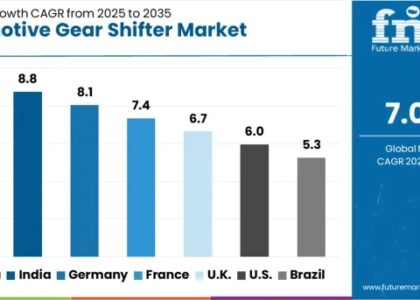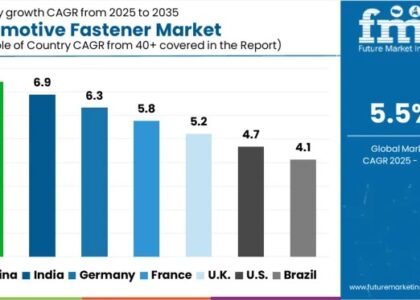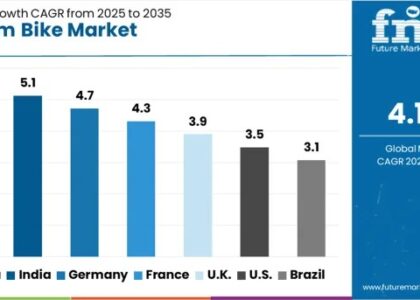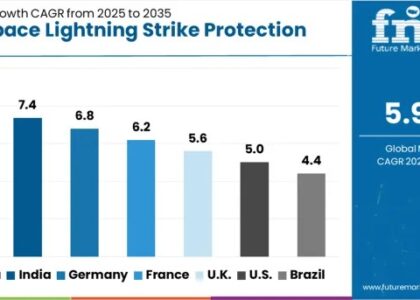
The Global Catheter-Related Bloodstream Infection (CRBSI) Treatment Industry is on track for a promising future, driven by the increasing need to combat these potentially life-threatening complications. According to a recent analysis, the market is expected to experience a steady Compound Annual Growth Rate (CAGR) of 5.6% from 2023 to 2033. This translates to a projected market valuation of US$2,668.6 million by 2033, reflecting a significant rise from the estimated US$1,466.9 million in 2022.
Although the COVID-19 pandemic affected various end-user industries, it also created pressure on the healthcare industry. As more people suffered from various ailments during the pandemic, the demand for catheters increased. As more patients were exposed to the use of catheters, the rate of bloodstream infections increased too.
Furthermore, technological advancements play a crucial role in fueling the market growth. For instance, miniaturized catheters and the introduction of antimicrobial catheters are expected to reduce catheter-associated infections Although major players are innovating, launching, and introducing safer catheters, the limited expansion of the same is contributing to the market for catheter-related bloodstream infusions.
Request Sample Report Using a Work Email To Get a Quick Reply!
https://www.futuremarketinsights.com/reports/sample/rep-gb-16130
Key Takeaways from the Global Catheter-Related Bloodstream Infection (CRBSI) Treatment Industry Study
- By distribution channel, hospital pharmacies are expected to possess a 40% market share for the catheter-related bloodstream infections market in 2023.
- By drug class, antimicrobial catheters are expected to possess a 35% market share for catheter-related bloodstream infections in 2023.
- North America is expected to possess a 35% market share for the catheter-related bloodstream infection market in 2023.
- Asia Pacific is expected to possess a 30% market share for the catheter-related bloodstream infection market in 2023.
“Rise in prevalence of diseases that require catheter are increasing the number of patients suffering from catheter-related bloodstream infections. This, in turn, is supporting the growth of the market.” states a FMI analyst
Global Catheter-Related Bloodstream Infection (CRBSI) Treatment Industry Competitive Landscape
Key players in the catheter-related bloodstream infection are Xellia Pharmaceuticals Ltd, Pfizer, Glenmark Pharmaceuticals Ltd, Fresenius Medical Care, CorMedix, TauroPhar GmbH, Geistlich Pharma, Citus Pharmaceuticals, AstraZeneca Pharma India Ltd, Merck Sharp & Dohme Corp
- In August 2021, Xellia Pharmaceuticals (‘Xellia’), a global leader in the manufacturing of specialty anti-infective treatments, announced that its manufacturing site in Cleveland, Ohio is now commercially operational and has released the first anti-infectives manufactured at the site, to be distributed for use by US hospitals.
- In February 2020, CorMedix, Inc. announced that Neutrolin received a grant from the U.S. Food and Drug Administration for the prevention of catheter-related bloodstream infections (CRBSIs) in hemodialysis patients.
Intravascular catheter-associated bloodstream infection (ICABSI) is an infection that occurs when bacteria or other microorganisms enter the bloodstream through a catheter. Catheters are medical devices that are inserted into the body to deliver fluids, medications, or nutrition. They are commonly used in hospitals, long-term care facilities, and in the home for patients who require ongoing medical treatment.
Global Catheter-Related Bloodstream Infection (CRBSI) Treatment Industry Key Companies Profiled:
- Xellia Pharmaceuticals Ltd.
- Pfizer
- Glenmark Pharmaceuticals Ltd.
- Fresenius Medical Care
- CorMedix
- TauroPhar GmbH
- Geistlich Pharma
- Citus Pharmaceuticals
- AstraZeneca Pharma India Ltd.
- Merck Sharp & Dohme Corp
Key Segments Profiled in the Global Catheter-Related Bloodstream Infection (CRBSI) Treatment Industry Survey
Drug Class:
- Non-antibiotic
- Anti-infective
- Antimicrobial
Pathogens:
- Contaminated Catheter Hub
- Contaminated Infusate
- Skin Insertion
- Hematogenous
Source of Infection:
- Aureus
- Aeruginsa
- CONS
- Baumanii
- Coli
- Pnemoniae
- Candida sp
Route of Administration:
Distribution Channel:
- Hospital Pharmacies
- Retail Pharmacies
- Online Pharmacies
For more Report Customization, connect with us at
https://www.futuremarketinsights.com/customization-available/rep-gb-16130
Author
Sabyasachi Ghosh (Associate Vice President at Future Market Insights, Inc.) holds over 12 years of experience in the Healthcare, Medical Devices, and Pharmaceutical industries. His curious and analytical nature helped him shape his career as a researcher.
Identifying key challenges clients face and devising robust, hypothesis-based solutions to empower them with strategic decision-making capabilities come naturally to him. His primary expertise lies in Market Entry and Expansion Strategy, Feasibility Studies, Competitive Intelligence, and Strategic Transformation.
Holding a degree in Microbiology, Sabyasachi has authored numerous publications and has been cited in journals, including The Journal of mHealth, ITN Online, and Spinal Surgery News.
About Future Market Insights (FMI)
Future Market Insights, Inc. (ESOMAR certified, recipient of the Stevie Award, and a member of the Greater New York Chamber of Commerce) offers profound insights into the driving factors that are boosting demand in the market. FMI is the leading global provider of market intelligence, advisory services, consulting, and events for the Packaging, Food and Beverage, Consumer Technology, Healthcare, Industrial, and Chemicals markets. With a vast team of over 400 analysts worldwide, FMI provides global, regional, and local expertise on diverse domains and industry trends across more than 110 countries.
Contact Us:
Future Market Insights Inc.
Christiana Corporate, 200 Continental Drive,
Suite 401, Newark, Delaware – 19713, USA
T: +1-845-579-5705
For Sales Enquiries: sales@futuremarketinsights.com
Website: https://www.futuremarketinsights.com
LinkedIn| Twitter| Blogs | YouTube





